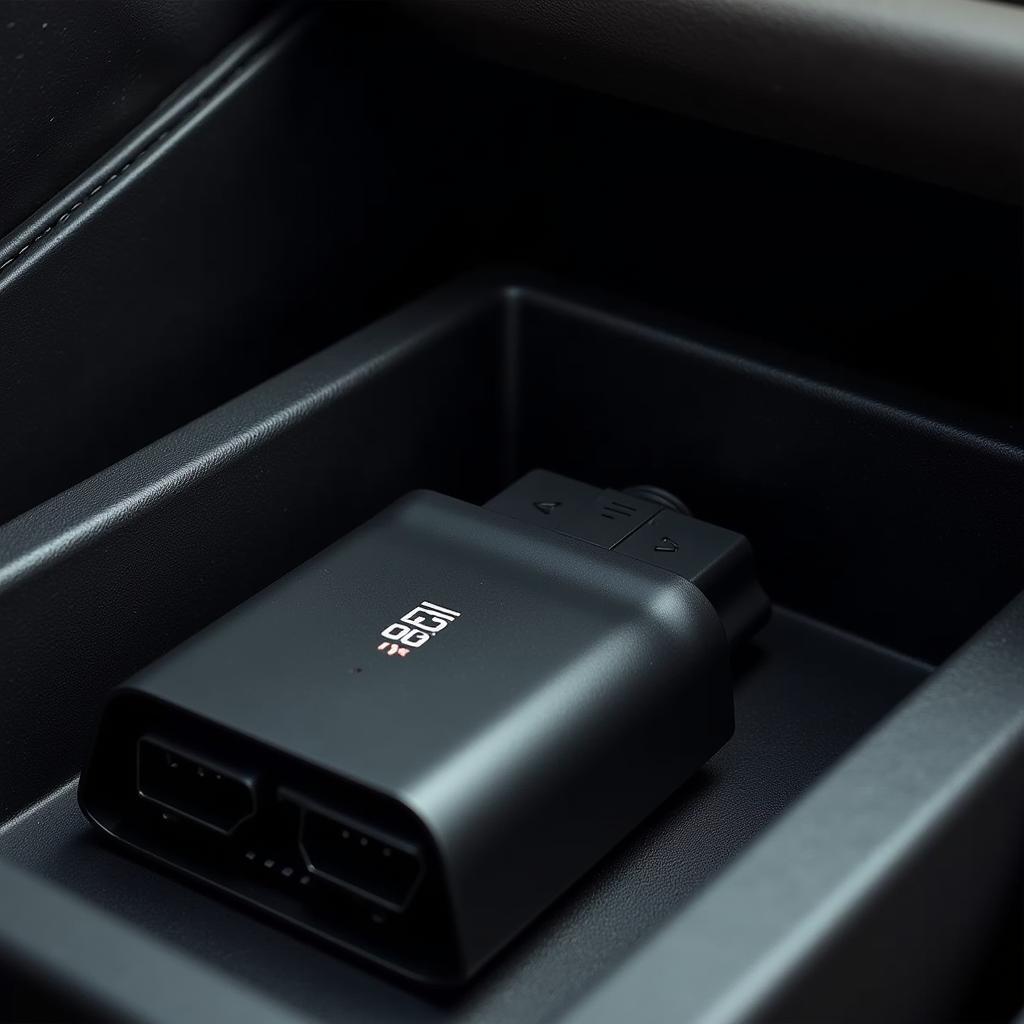OBD2 scanners are essential tools for car owners and mechanics alike. They provide valuable insights into your vehicle’s health and can help you diagnose and fix problems quickly and efficiently. However, like any other piece of equipment, OBD2 scanners need to be stored properly to ensure their longevity and optimal performance. So, where to store OBD2 scanners? Let’s explore the best practices and storage solutions.
Factors Affecting OBD2 Scanner Storage
Before we delve into specific storage locations, it’s crucial to understand the factors that can impact your scanner’s well-being. These factors include:
-
Temperature: Extreme temperatures, both hot and cold, can damage the sensitive electronic components within your OBD2 scanner. Avoid storing it in areas prone to extreme temperature fluctuations, like a freezing garage in winter or a scorching dashboard in summer.
-
Humidity: Moisture is another enemy of electronics. High humidity levels can lead to corrosion and short circuits. Opt for a dry storage location with good ventilation.
-
Physical Impact: OBD2 scanners are generally robust but not indestructible. Dropping them or subjecting them to strong impacts can damage their internal components or the casing. Choose a storage spot where the scanner won’t be knocked around.
-
Dust and Debris: Over time, dust and debris can accumulate on your scanner, potentially affecting its functionality. Look for a storage solution that offers some protection from dust.
Best Places to Store Your OBD2 Scanner
Considering the factors mentioned above, here are some ideal locations to store your OBD2 scanner:
1. Inside Your Vehicle’s Glove Compartment
For most car owners, the glove compartment offers a convenient and relatively protected space. It generally provides a stable temperature, is shielded from direct sunlight, and offers some protection from dust. However, ensure the glove compartment is clean and dry before storing your scanner.
2. In a Tool Box or Organizer
If you frequently use your OBD2 scanner for professional purposes or have multiple scanners and diagnostic tools, a dedicated tool box or organizer is an excellent choice. It provides a secure and organized space, protecting your scanner from physical damage, dust, and potential spills.
3. On a Shelf in Your Garage or Workshop
If you have a designated workspace for car maintenance, storing your OBD2 scanner on a shelf offers easy access and visibility. Just ensure the shelf is in a cool, dry area away from direct sunlight, moisture, and potential hazards.
Storage Tips for Long-Term Protection
Whether you’re storing your OBD2 scanner for a few weeks or several months, these additional tips can help ensure its longevity:
-
Remove the Batteries: If you don’t plan on using your scanner for an extended period, remove the batteries to prevent potential leakage and corrosion.
-
Use a Protective Case: Consider investing in a dedicated carrying case for your OBD2 scanner. These cases often feature padded interiors, providing extra protection against impacts and dust.
-
Label Your Scanner: If you own multiple OBD2 scanners or work with different vehicle makes and models, label each scanner clearly to avoid confusion.
-
Regularly Inspect Your Scanner: Before each use, take a moment to inspect your OBD2 scanner for any signs of damage, corrosion, or loose connections.
FAQs About Storing OBD2 Scanners
Q: Can I leave my OBD2 scanner plugged into my car?
A: It’s not recommended to leave your OBD2 scanner plugged into your car for extended periods. While modern vehicles have safety mechanisms, continuous connection can drain your car battery or potentially interfere with the vehicle’s electronics.
Q: What should I do if my OBD2 scanner gets wet?
A: If your scanner gets wet, immediately disconnect it from any power source and remove the batteries (if applicable). Dry the exterior thoroughly and allow it to air dry in a well-ventilated area for at least 24 hours before attempting to use it again.
Q: How often should I replace the batteries in my OBD2 scanner?
A: Battery life varies depending on usage and scanner model. As a general rule, it’s a good practice to replace the batteries at least once a year or whenever you notice a decline in performance.
Need More Information on OBD2 Scanners?
For more insights into OBD2 scanners, troubleshooting tips, and specific code interpretations, explore our comprehensive resources:
- H23 OBD2 Distributor Wiring
- Carista Code Specific OBD2 Honda P0101
- Ways to Get Your Catalytic Convertor to Read on OBD2
- OBD2 P0344
- OBD2 Mondeo Mk3
By following these simple storage guidelines, you can significantly extend the lifespan of your OBD2 scanner, ensuring it’s always ready to provide accurate diagnostics and help you keep your vehicle running smoothly. If you have any questions or need further assistance, our team of experts is here to help! Contact us via WhatsApp: +1(641)206-8880, Email: [email protected]. We provide 24/7 customer support.


